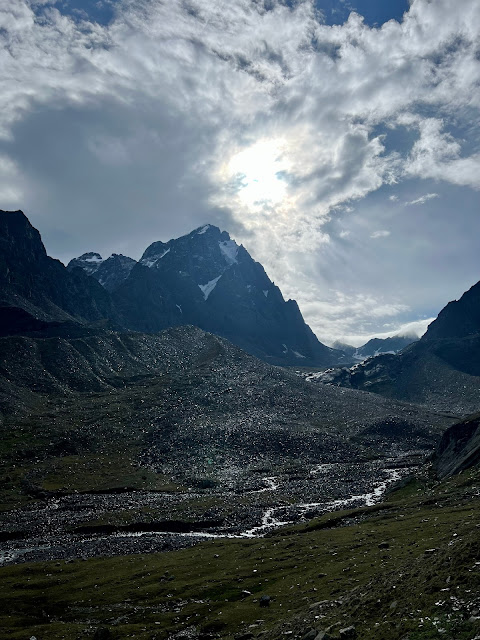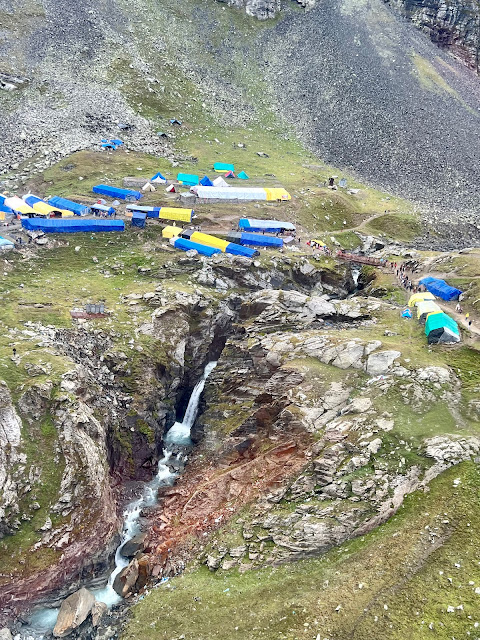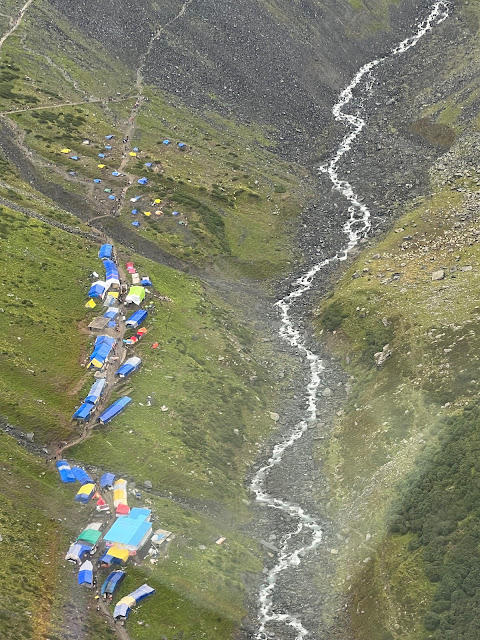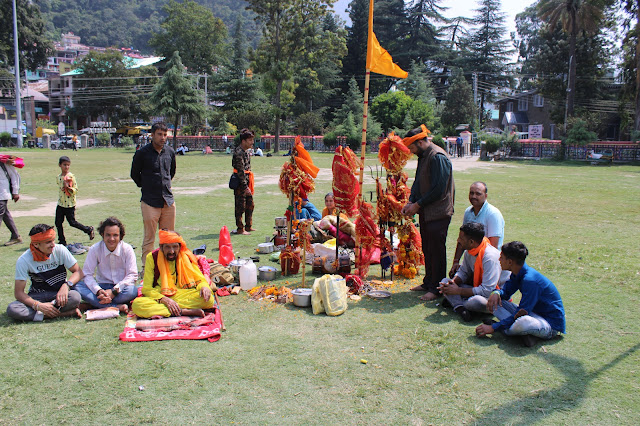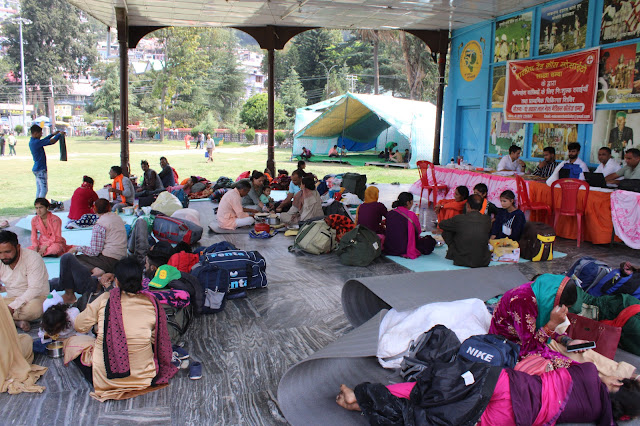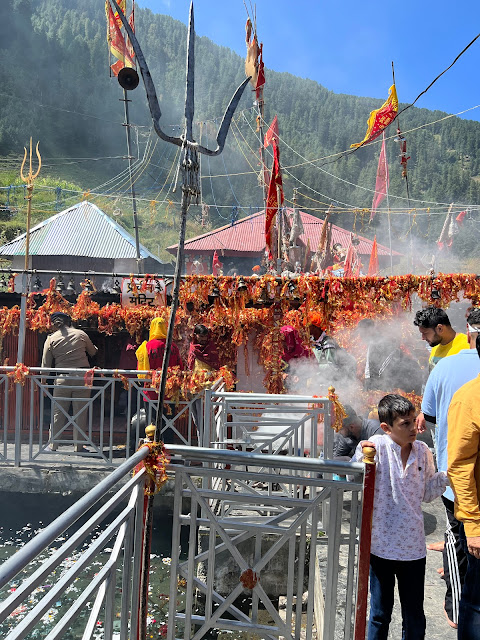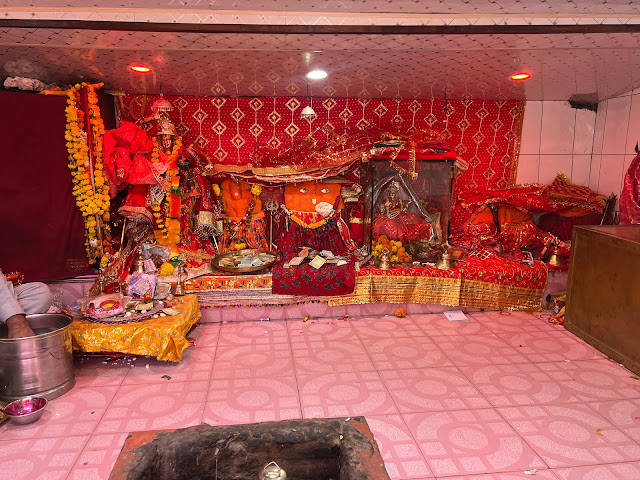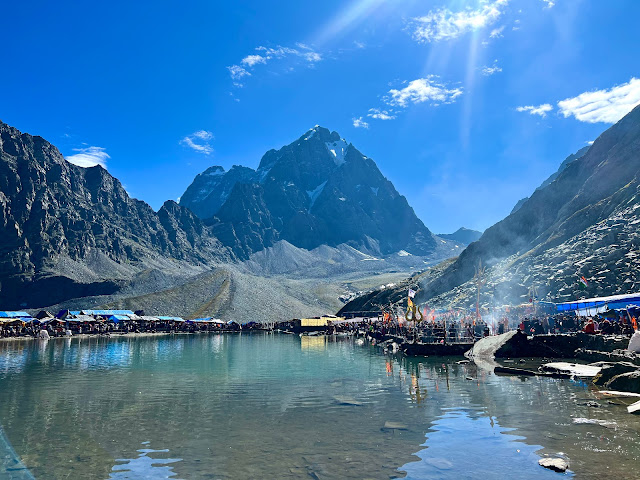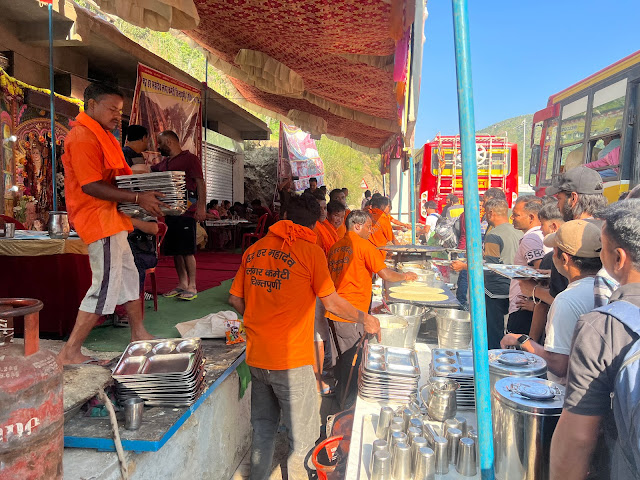August- September is the month when thousands of pilgrims say “Chalo Chamba” to be part of one of the most revered pilgrimages – the ‘Mani Mahesh Yatra’ in Bharmour. The whole environment starts reverberating with –
When it comes to pilgrimages most of us truly believe that we are called by the divine power for ‘Darshan’, especially if the yatra is a tough one like Mani Mahesh. The pious way to do this yatra obviously is by foot, traversing the entire path of 14 km – Bharmour to Hadsar to Dhancho to Sundrashi to Gauri Kund to Mani Mahesh lake – 7 to 9 hours uphill beautiful trek – depending on individual strength. But we humans find ways to reduce our efforts – the faith, however, remains intact. The yatra since 2013 has the option of Heli Taxi to cover 90% of the trek in just 6 minutes from Bharmour to Gaurikund. However these flights also require blessings of the Lord as the weather changes almost every half an hour near the Mani Mahesh.
We, in our hearts, sought permission from Lord Shiva to take the Heli taxi route. However, on reaching the Helipad, the weather turned tricky. My heart sank as we had only that day to do this yatra. We couldn’t do this last year also because of erratic weather. Miraculously it cleared up and we flew……to what we call a ‘bulwark’….a divine blessing to do the Darshan of the famous Mani Mahesh.
Mani Mahesh or Chamba Mahesh – in the Pir Panjal range of the Himalayas at the height of 18500 feet- is one of the five abodes of Lord Shivji. It also has a pious lake – the Dal Lake – at 13000 feet facing it. The other abodes are Kailash Parvat in Tibet, Kinnar Kailash (Kinnaur), Srikhand Mahadev (Kullu), and Aadi Kailash (also known as Chota Kailash) in Uttrakhand. All of them have one thing in common – a hard arduous trek that requires immense faith along with mental and physical strength.
The name is because of a ‘glowing image formed at the top of the mountain’ – a ‘Mani’. It happens because of the first sun rays falling on the snow-clad mountain at a particular angle – a rare occurrence as the mountain peak is mostly covered with clouds.
As the legend goes the ‘Mani’ on Shiva’s abode was gifted by Naag Vasuki on being saved from Garuda by him. Shiv gave the Lake Kailash (in the J&K region) to Vasuki and he created Mani Mahesh to live with Parvati (worshipped as Girija here) and made ‘Gaddis’ his devotees; though he had got married to Parvati at Kailash Mansarovar. Another legend says that Shiva performed penance at the banks of Kailash Lake and also that this entire mountain range is the residence of Tridev – Bramha, Vishnu, and Mahesh. The Gaddis also believe that Shiva resides in Mani Mahesh for six months and hands over the charge of this area to Lord Vishnu. He himself moves to the Netherworld (Patallok) to return to Shivratri.
The Mani Mahesh also remains the virgin mountain as it has not been scaled to date. As the stories tell – many did try to climb the peak but lord Shiva never wished for it and most turned into stones while trying.
Lord Shiva is the head of Mani Mahesh Yatra which starts with a big fanfare on the eighth day of ‘Bhadoon’ from Chamba’s Laxmi Narayan Temple and Chaugaan with the sacred stick ‘Charri” being carried by the sadhus. It was started in the 16th century when Raja Prithvi Singh dreamt of Lord Shiva asking him to start this holy pilgrimage. It is also believed that whoever shall do the ‘Naun/Snan’ (bathe) in the mani Mahesh Lake shall get rid of all his/her sins. Thousands of pilgrims undertake this yatra every year.
The Government of Himachal officially undertakes the responsibility of organizing this pilgrimage along with the Yatra Trust at Bharmour. I could see many porters and mules being organized for the yatris. NDRF personnel and Mountaineering volunteers are there to oversee the smooth flow of yatra and rescue stranded devotees whenever required (which happens many times because of treacherous paths and bad weather). Free medical camps overnight stay facilities and special Police arrangements are made for a smooth flow of traffic.
Before embarking on the Yatra a devotee is supposed to seek blessings at Chaurasi Temple Bharmour and from the Bharmani Devi – who was blessed by Shiva to be worshipped before him.
As soon as we alighted from the Heli taxi near the Gauri Kund, we were greeted by the clear view of the Kailash and what a majestic sight it was; totally worth the travel. A short steep climb took us to the lake for the ‘naun’ or the dip. The chanting of ‘Jai Bhole Nath’ and ‘Har har Mahadev’ could be heard all around. Despite many warnings of water being subzero; I decided to take a dip in the main lake. What’s the point of coming to Mani Mahesh Yatra and not doing the ‘Snan’ in the kund as that’s what the Yatra is all about? Interestingly after my dip, many from our entourage decided to brave the cold waters and worship the Shiva standing knee-deep in the cold waters.
Afterward, we sat for a while to just absorb the holy vibes of the place, to appreciate the natural rugged beauty around us, feel the blessings of the Lord, and observe the faith of the people around us. We slowly walked down to Gauri Kund – a place where devi Parvati bathed –where only ladies can take a dip and took our flight back to Bharmour.
More than the Yatra itself what fascinated me was the sentiments and legends connected with it and how this yatra is not only religious but also an economic booster. The way the entire Bharmour town gets adorned and awaits it, the way it gets converted into a base camp with many houses offering their facilities on rent, the way it provides an opportunity for many to do seva and put up Langars. There are Bhakts who will quietly come for a month to just help with the yatra in any capacity. The entire roads from Nurpur to Chamba and Bharmour are periodically lined with Langars – offering the choicest of food and services (even foot massages). The trekking path is also interspersed with Langars and halting/staying facilities for Yatris. The local artisans wait for this fair year round for a good business.
What also gladdened my heart was the general appreciation (a rarity in today’s times) for the arrangements made by the administration and police for the smooth conduct of this yatra.
Such ‘yantras’ need to be encouraged as they reinforce the sense of ‘Bhakti’ in us, create a ‘connection’ with the divine, and test our willpower and strength. It also provides an opportunity to visit the hinterlands and experience their treasures of – Crafts, Culture, and cuisine.

Dr. Anurita Saxena is an Associate Professor of History and teaches in the Government College for Girls in Shimla. She is a post – doctorate from JNU with specialisation in Environmental History. She hails from UP but has made Himachal her home since past 32 years. She has keen interest in all aspects of Himachali crafts, cuisine and culture. An enthusiast for life, she loves to trek, play Golf and Bridge, sing and dance and be a Vipassna practitioner. She conducts sessions on Communication Skills and personal grooming and is a Casual compère with Himachal Doordarshan. She can be contacted at [email protected]



